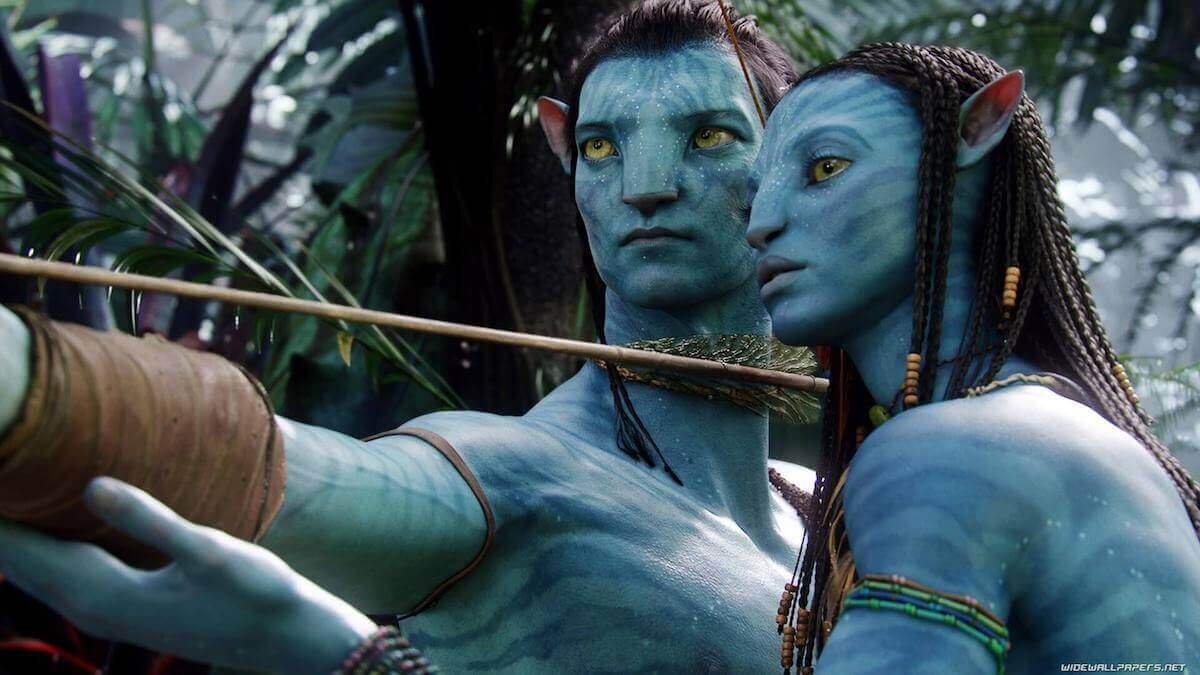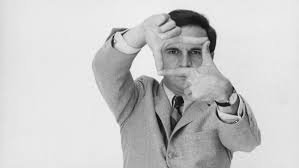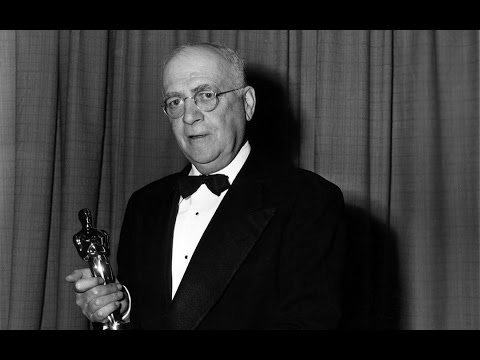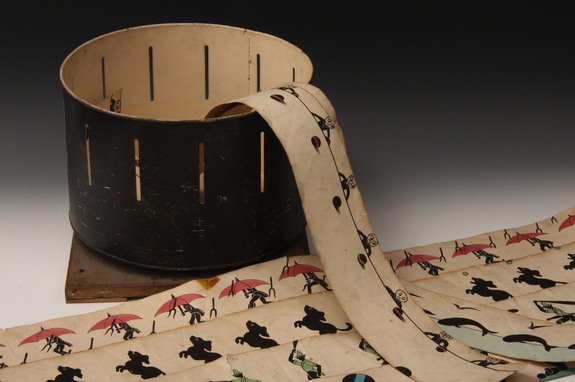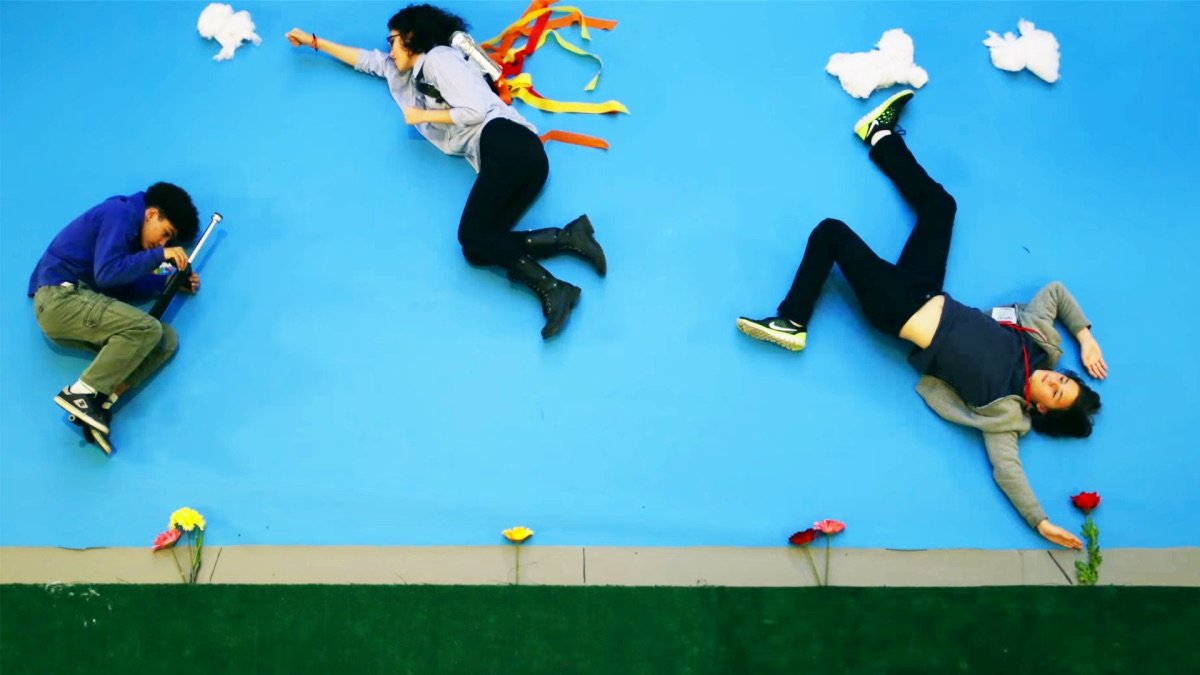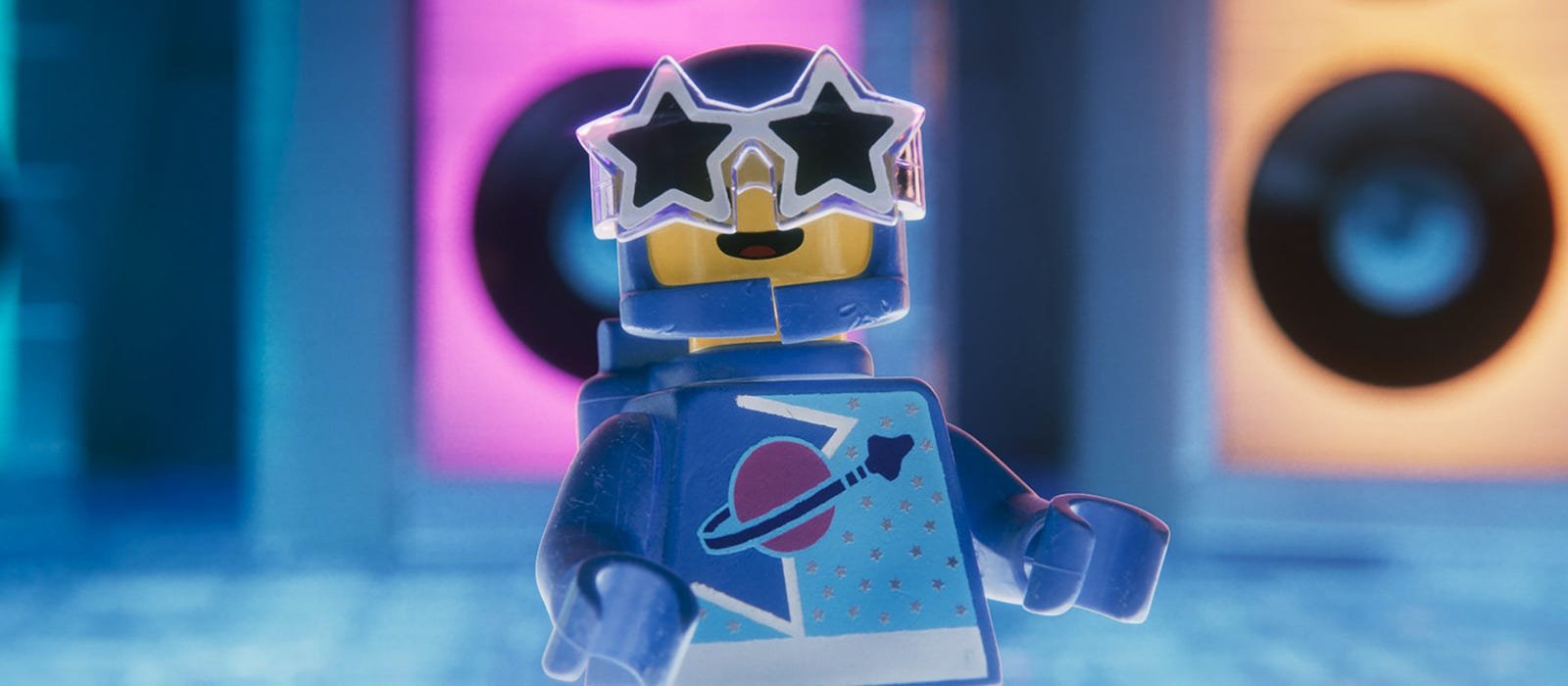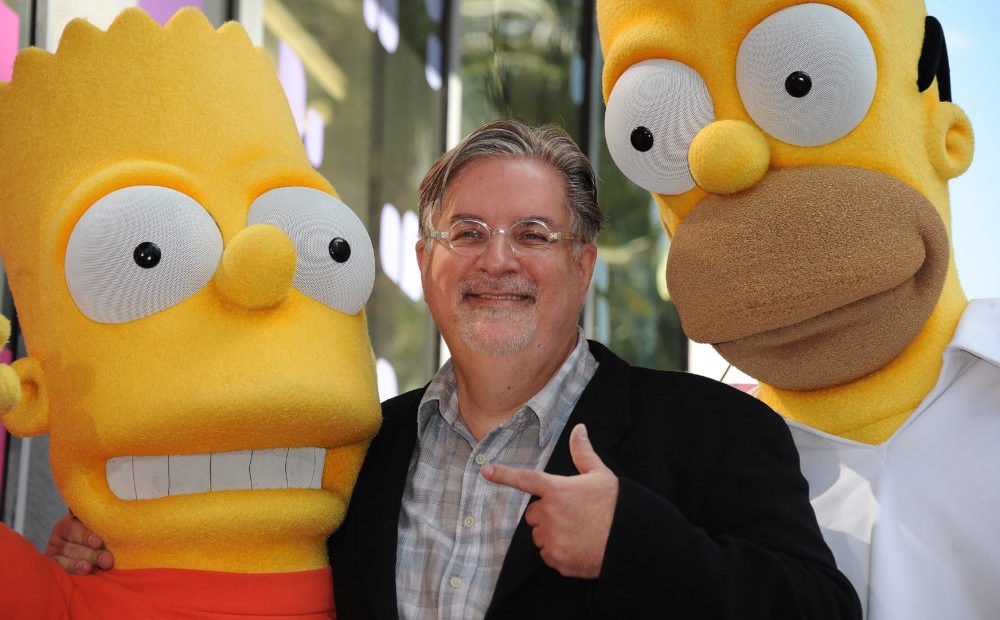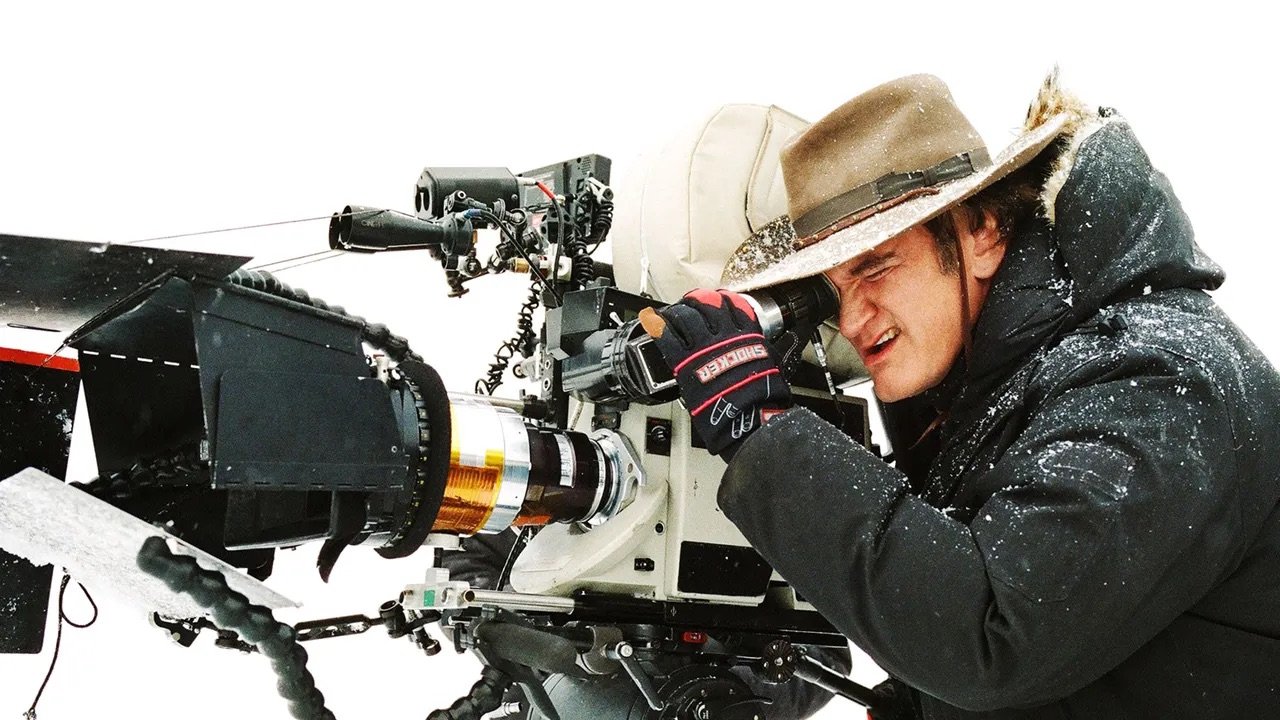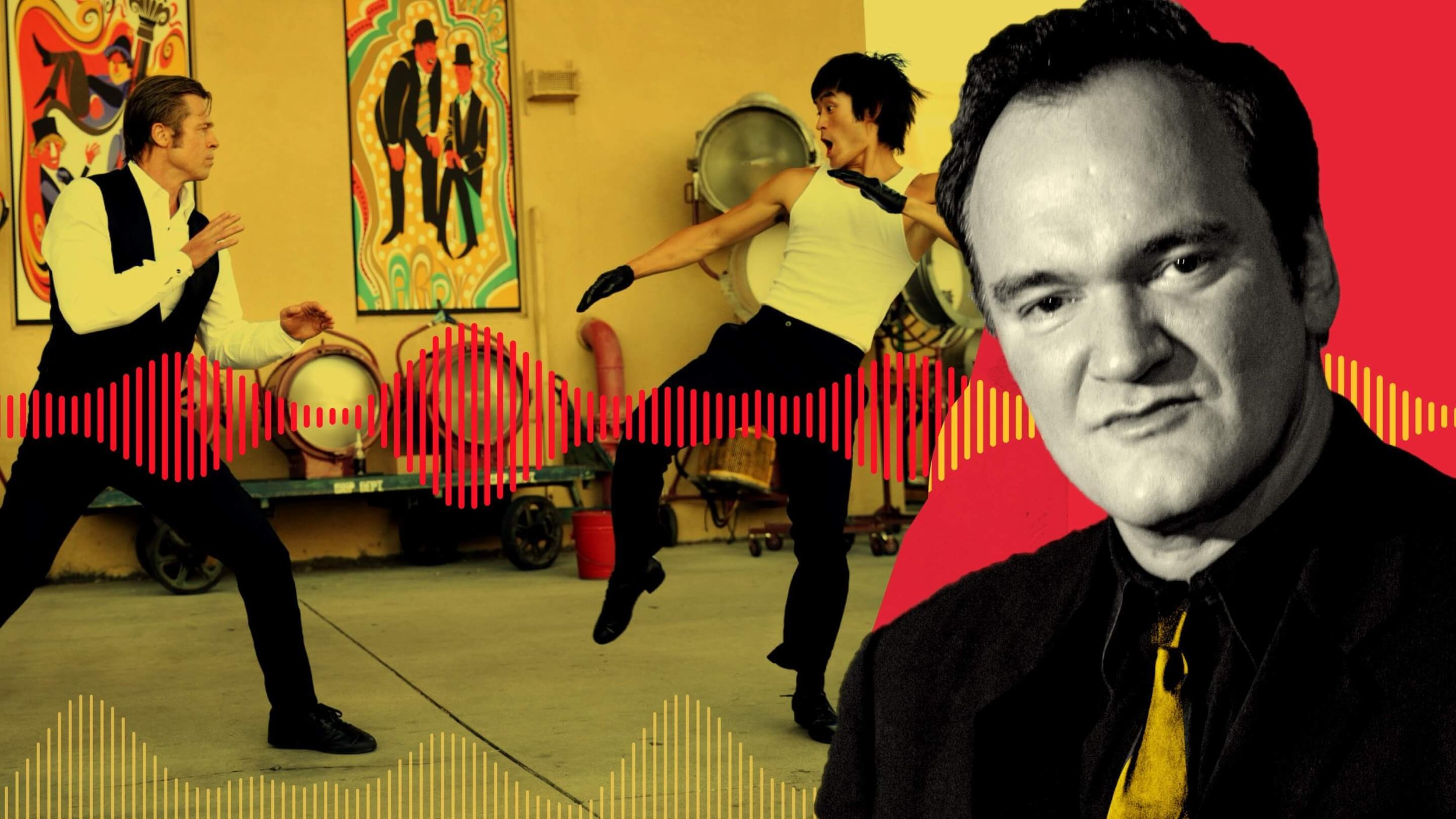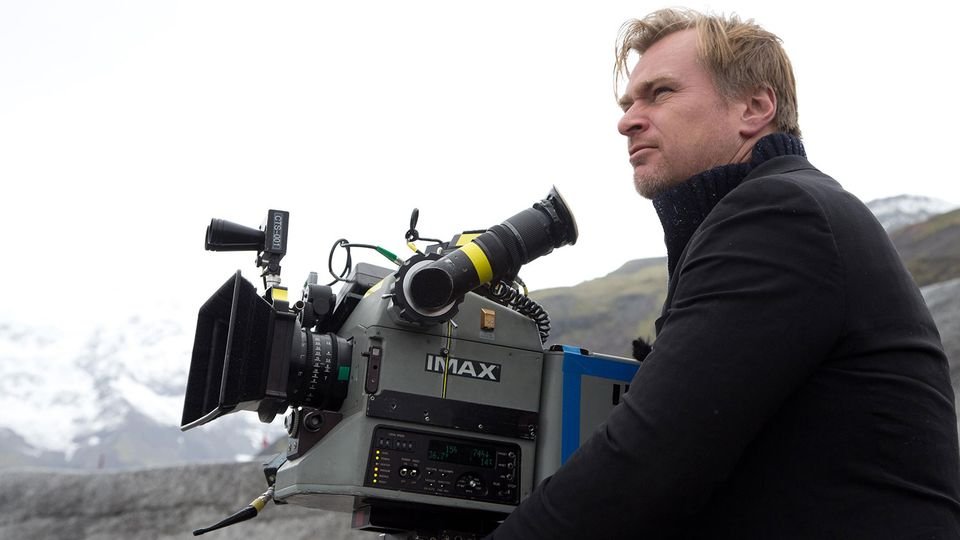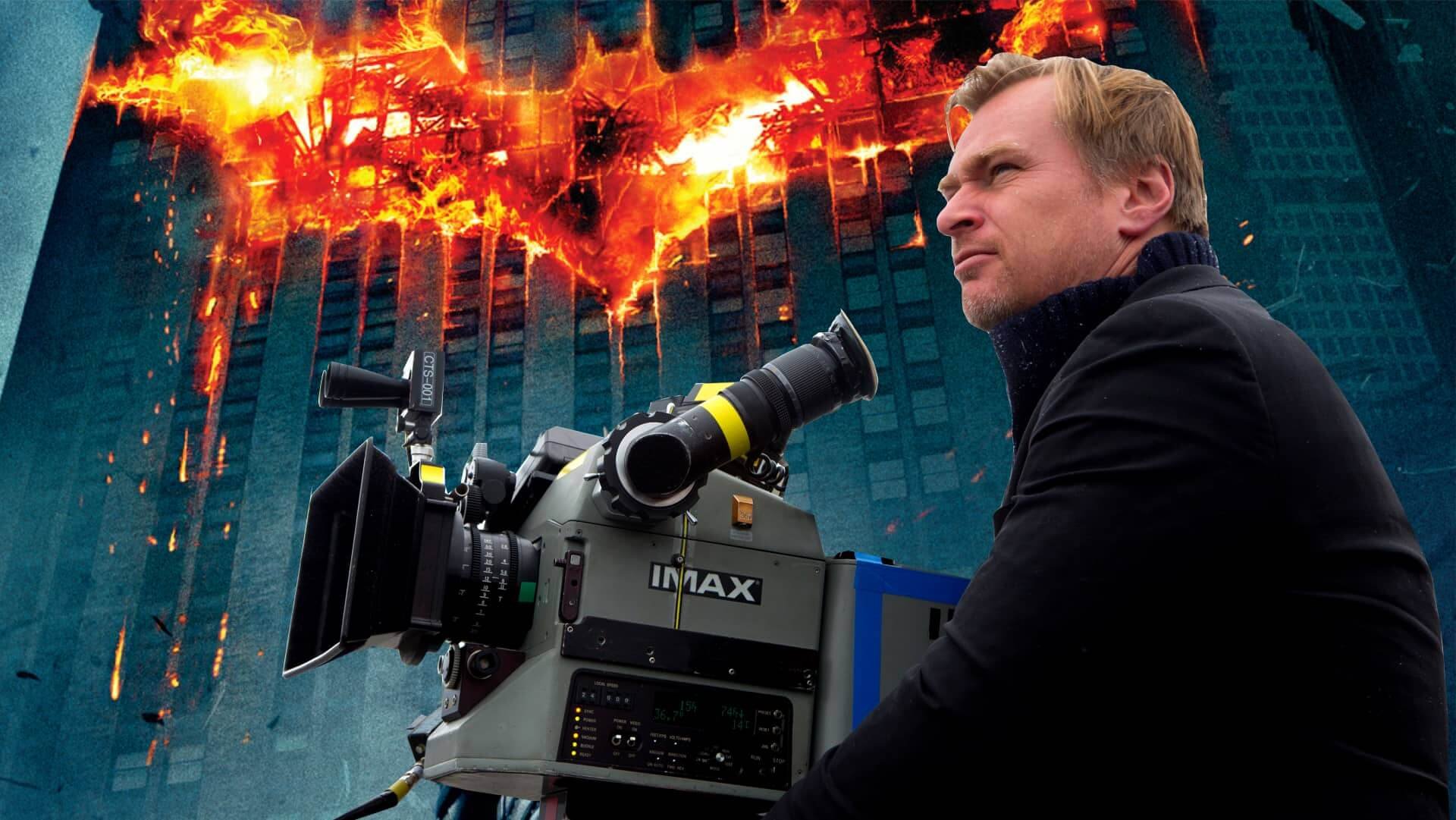Initial Idea
Week 1 & 2 – 14/03 - 27/03
I'm thinking of producing a stop motion montage of some of the most iconic scenes in my favorite movies.
Initially, I could do some excellent character sketches in illustrator and animate them in after effects. But having looked at the amount of time and technical skills needed to bring drawings to life, I have decided to use stop-motion. I could get really good results with stop-motion with the time and skills I have.
It allows me to use all the great Legos I have, which I can use to build my own great set and characters from my desk. Lego will also enable me to build sets for different scenes quickly. And make changes if things are not working out.
I also think that by doing five different scenes, I will be able to show all my creative skills. I think it will be important that I choose five different types and styles of film to make the compilation visually interesting.
I also think stop-motion is a good choice because I enjoy editing and feel like it's one of my strengths. I'm going to enjoy editing all the clips together to try and create one seamless video clip. Editing will also play an important part in the clips I am making as I will have to join different parts of the film together. I have to start working out what films and scenes I will include as they need to work together.
After that, I will develop a pretend Youtube channel and name, something like Rudi's Top 5 Action Scenes. Creating the intro graphics and special effects or animations will be crucial. I want it to feel like a proper program with its distinct brand.
I won't have to develop a story as I will be recreating scenes, but I will have to study the clips carefully as I want to recreate them in Lego. Even though they’ll be made in Lego, I still want them to have the same look and feel. I will also have to make sure that I build any essential props or objects in Lego. First, I will research the history of stop motion and the techniques used to create compelling stop motion films. Next, I will research every scene I recreate and look at the style, art direction, camera angles, and movement. Finally, I will work out what sound I will use, how the lego characters will move, and special effects, like gunshots or blood.
This is a mind-map I drew as I was trying to brain storm different ideas, making sure I took every aspect of my animation into consideration.
General Animation Research
Week 3 – 28/03 - 03/04
Before I began animating in stop motion, I needed to research and develop a larger understanding on animation and the different types and methods that I could maybe use. Here are a number of forms of animation I found…
Traditional Cel Animation
Cel animation is the art of creating 2D animation by hand on sheets of transparent plastic called “cels”.
Following a planning process, animators transfer draft drawings onto transparent sheets of plastic called cels. Each cell features one drawing with an outline on one side of the plastic, and the colour is filled in on the other.
These ‘cells’ are then placed over a background and photographed in sequence. When played back at a speed of 12 or 24 frames, they create the illusion of movement.
It’s rare for traditional cel animation to be used in modern productions since everything is digital now.
Digital Frame-by-Frame Animation
Using modern technology, we can create similar effects and looks to cel animation without having to hand-paint all the frames traditionally.
By using digital software, it’s much easier to create a simple frame-by-frame animation with colour and depth using keyframes and layers rather than physical transparent cels and paint.
Motion Graphics
Motion graphics are moving vectors. I have already done quite a bit of vector animations in illustrator and after-effects. In addition, motion graphics are often used to communicate information to the viewer, like an info graphic.
'Together with music and effective copy, they can give us a message. We use them to create ads, title sequences for movies. Put simply, motion graphics are animation, with text as a major component.' (Biteable, 2020)
I think I could use motion graphics in my animation as I am familiar with the process and enjoy making them.
3D/CGI
CGI stands for computer-generated imagery, which uses computer graphics in art and media. These can be 2D or 3D animations, objects, or renderings; the type of art or media can be a film, television program, video game, or simulation.
In films ranging from science fiction epics to quiet, intimate dramas, CGI is used, from animating entire locations to subtle work on characters and environments. In recent years, CGI has been the go-to visual effect for most significant movies, whether its use is subtle or obvious.
Auteurism Research
Week 4 – 04/04 - 10/04
When I started working on my FMP, I hadn't even heard of an auteur. I first heard of it when I started doing my research. I first came across the term when I began researching Christopher Nolen, who directed one of my favourite films, Dark Knight.
Christopher Nolan
The word auteur is a French word that translates to 'author' in English. When auteur is used in cinema, it describes a director who controls every aspect of the film.
'An auteur is a filmmaker whose individual style and complete control over all production elements give a film its personal and unique stamp.’ (Studiobinder, 2019)
Auteur directors generally have a distinctive style that can be seen in all their films. Quentin Tarantino is an excellent example of an auteur director. He writes, edits, directs, and even stars in some of his movies.
‘The auteur director shapes every part of the movie. Their fingerprints are visible on every aspect’ (Studiobinder, 2019)
Origin
Auteur theory comes from a French publication in 1954 called Cahiers du Cinema. In the article, Director Francois Truffaut wrote about serval new filmmakers he termed auteurs. Truffaut argued that the filmmakers who made the best films had a unique, personal vision.
'Truffaut famously claimed, "there are no good or bad films. Only good or bad directors." Why? The theory is that a director isn't necessarily a film artist. But an auteur is.' (Studiobinder, 2019)
Francois Truffaut
Requirements
Just because you direct doesn't mean you are automatically an auteur.
'The auteur of a film is the film's true artist. The visionary behind it. The prime mover. But you can't have that credit just by being the movie's director.' (Sudiobinder, 2019)
The American film critic Andrew Sarris said that the director needed to have these three rules in their films to be an auteur.
1. Technical Competence.
Auteurs need to be at the top of their craft, and Auteurs must have a say in many components of their filmmaking. Therefore, they should have a very high level of skill in all these areas too.
2. Signature Style
Signature style is what separates auteurs from other technically sound directors. You should be able to see their unique personality and style in every aspect of the film.
'One of the primary tenets of auteur theory is that auteurs make movies that are unmistakably theirs. This is in sharp contrast with the standard studio directors of the era who were simply translating the script to screen with little interrogation of the source material or editorial input.' (Masterclass, 2021)
Although I am recreating famous film scenes, it would be cool if I could add my unique style to my animations. I will do it when I storyboard out my shots. For example, I could add a character in every scene, or I could try and develop my style of lego sets for each scene.
3. Interior Meaning
It is the hardest one to understand. Interior meaning means that the films made by auteur directors are not just made for pure entertainment. Auteur films should also 'reveal the filmmaker's unique perspectives and ruminations on life.' (Masterclass, 2021)
The main difference between auteurs and other film directors:
'Auteurs wrote and directed films that went beyond surface-level stories to ask bigger questions about human existence and explore deeper themes nuanced and skilful. Whereas most directors translated scripts written by others to the screen, auteurs usually write their screenplays or at the very least have a heavy editorial hand in the writing process.' (Masterclass, 2021)
Although I will be editing and directing my animation, I'm not sure I will answer any big questions about human existence.
Finalised Idea
Week 4 – 04/04 - 10/04
I have now got a final concept for my stop-motion animation. After doing further research, I discovered that many of my favourite films are directed by auteurs. However, auteur was not a word or term I was familiar with before I started doing my research. I am pretty excited about this as it's a fascinating subject, and there are many things that I can explore and experiment with using my stop-motion.
The five films I have chosen are:
Steven Spielberg’s – Jaws (1975)
David Fincher’s – Fight Club (1999)
Quentin Tarantino's – Pulp Fiction (1994)
Wes Anderson's – Isle of Dogs (2018)
Christopher Nolan’s – Dark Knight (2008)
I've chosen these films for different reasons. Jaws will have many long, panoramic shots without much dialogue. Pulp Fiction will have close-up camera scenes with lots of complex dialogue. Isle of Dogs and Fight Club will allow me to do special effects in After Effects. I will also need to do more in-depth research on each particular film and scene to recreate it in Lego.
Doing it all in Lego figures will also allow me to keep the look and feel consistent; it will also allow me to develop my own style.
Overview
Rudi’s Top 5 Auteur Movie Scenes is a fictional YouTube channel specializing in showcasing the best movie scenes in stop-motion lego. It will be made using stop motion animation using iconic auteur movie clips. It will show five scenes – the ‘Bible Scene’ from Pulp Fiction, the ‘Beech Scene’ from Jaws, the ‘Ikea Scene’ from Fight Club, the ‘It’s Worth It Scene’ from Isle of Dogs, and the ‘Interrogation Scene from The Dark Knight.
Jaws
‘Beach Scene’
Fight Club
‘Ikea Scene’
Pulp Fiction
‘Bible Scene’
Isle of Dogs
‘Ok it’s worth it Scene’
Dark Knight
‘Interrogation Scene’
The stop-motion will be done using Lego Minifigures and props sets made from lego bricks. The lego stop motion will pay homage to the iconic scenes, and each set will be carefully constructed to have the same look and feel as the actual movie. I will also research the history of stop-motion and look into different methods that can be used to create compelling films. I will also analyze each of the five scenes and make notes to understand each one better. And see what each director does to make each scene unique and how I can recreate it. The YouTube channel and stop motion will suit children aged 15+ and are produced for movie film buffs and fans. I initially didn't know who or what my Top 5 films would be or who for, but now I feel my final concept is a lot stronger and will work as a film.
I will use my iPhone and my compact camera to record the stop-motion. Then, I will use Adobe suite, Premiere, and After Effects to edit my video. Finally, I researched what extra camera and equipment I might need, like tripods and lighting. I will create a project schedule and timeline to stay on track and get all the five films finished on time. I do my primary and secondary research during the day and use nighttime for filming so I can keep the light consistent. If I feel like I am running out of time for filming, I will reduce the number of scenes I will film from five to three as there will probably be a lot of editing and special effects to do in After Effects. I will keep an online diary that will allow me to reflect on what I have done during the day and record any developments or problems. The journal diary will also document any changes and show the project's progress from start to finish. In addition, I will take photos of the production to record the filming and screenshots to document and record the research.
Cinema Trip
Week 4 – 04/04 - 10/04
Yesterday I went to the Prince Charles cinema in Soho to see one of Tarantino's first films – True Romance. He didn't direct True Romance. Ridley Scott directed it, but it was his screenplay. I enjoyed it. It had an amazing cast with lots of great, engaging, and funny characters; as with all Tarantino films, the script and dialogue were strong. The scene below, the Sicilian scene with Dennis Hopper and Christopher Walken, was my favourite.
It was also my first time at the Prince Charles cinema. It was cool and had that American, retro vibe Tarantino has in his films.
History of Stop-motion
Week 5 – 11/04 - 17/04
What is Stop-motion?
Stop-frame animation, better known as stop-motion, is a form of animation captured one frame at a time, using physical objects such as toys and puppets. Playing back these images can give the illusion of movement, thus giving you stop-motion. If you are familiar with the early work of Walt Disney, stop-motion uses the same technique with 3D objects instead of 2D drawings.
Original Pioneers
Stop-motion animation has been around for a long time, dating back to the 1800s. The first example of stop-motion animation was in 1898, in a film called The Humpty Dumpty Circus, made by directors and producers J. Stuart Blackton and Albert E. Smith. This film depicted acrobats and animals made from wooden toys brought to life through this new form of animation. Blackton continued to work with and developed this technique, using a combination of live-action and stop-motion to create groundbreaking movies such as ‘The Enchanted Drawing’ (1900).
However, animator Willis O'Brien was the one to give stop-motion animation its first serious entry into the mainstream film industry with work such as The Lost World (1925), in which O'Brien mixed stop-motion dinosaurs with live actors, which had never been done before. This was a significant hit, but his work on King Kong (1933) took stop-motion animation to new heights, as it is still seen as one of the greats within film history. For King Kong, O'Brien perfected many of the techniques he had developed for The Lost World. Smooth motion, improved integration, and realistic expressions with live actors made the stop-motion Kong the film's star, which gave O'Brien his place as the father of modern stop-motion animation. The film Mighty Joe Young (1949), in which O'Brien was in charge of the stop-motion animation special effects, was awarded an Oscar for best visual effects in 1950.
O'Brien's greatest protege was Ray Harryhausen. Harryhausen made a string of major films that advanced the art of stop-motion animation, including The 7th Voyage of Sinbad (1958), Jason and the Argonauts (1963), and Clash of the Titans (1981).
Another notable Hollywood stop-motion pioneer was George Pal. His stop motion animation work appears in numerous films, the most famous of which, 1953's The War of the Worlds, won an Academy Award for best visual effects.
Optical Toys
series of stills compiled together to create the illusion of movement was being investigated and experimented with as early as the 1800s. This shows how long stop motion has been used as an animation technique, as the first camera hadn't even been invented. During the later part of the industrial revolution, many different optical toys began to hit the market, becoming extremely popular and quickly developing film animation. Some of these optical toys are reasonably complex, like the phenakistoscope, which animates a sequence of twelve or more graphics. Others are a bit more simple such as the thaumatrope, which rapidly alternates between only two images.
Back to the phenakistoscope, this circular, elliptical disc has a series of slots cut between multiple pictures or drawings. The user holds this toy in front of a mirror and spins it while looking through the slots. These images are then reflected the user quickly, giving the illusion of the images moving in a looping animation. The zoetrope is similar but doesn’t require a mirror. Instead, the drawings sit inside a cylinder placed upon a quickly spinning disc. When the viewer looks through slots cut into the cylinder, the drawings on the inside appear to move.
I researched this information from a book called ‘The Moving Image Workshop’.
Types of Stop-motion
Week 5 – 11/04 - 17/04
In my FMP, I plan to use Lego figures to create my stop-motion animation. Lego figures have some adjustable parts like the head, legs, and arms, which is helpful for movement and diversity within the animation. Not having this extra movement can affect certain scenes and prevent me from making them.
Although I have already made up my mind on what medium I will be using to create my animations. I thought it would be helpful to research the various techniques of stop-motion animation and adopt a better understanding of its evolution. And the variety of techniques to create stop-motion animation. So, I’m going to be using books and the internet to research these techniques.
Claymation
A claymation is a form of stop motion animation where each animated piece is made from clay. The making process is long and time-consuming. Each piece must first be made from a wire skeleton called an armature and then plasticine wrapped around it. It is then arranged on a set where each piece parts one small part at a time.
'Each frame is then captured and played back in quick succession to give the appearance of movement.' (Studiobinder, 2020)
This shows how much time, skill, and effort are needed to animate something as simple as a mouth through claymation. So, instead of clay, I thought it would be better to stick to a skill I already have by using Adobe After Effects to animate my mouths. This allows me to use one mouth instead of many.
Some of the best examples of claymation are made by Ardman films in the UK, the studio behind Chicken Run and Wallace and Gromit.
‘Claymation involves moving clay objects in each frame. This way, you can bring in innovative figures built with wires and clays that can be used creatively on screen.’ (NFI - Stop-motion Animation)
I want to make my film out of claymation but don't think I would have the skills. It feels like puppet animation would take too long to achieve my desired results, like claymation. But I could experiment using my Marvel figurines as they are ready-made and could speed up the process.
Cut-out Animation
Another more straightforward form of stop-motion animation is cut-out animation. Cut-out animation is one of the oldest and simplest animation techniques and has many forms and variations. Cut-out animation involves producing animations using 2-D characters, props, and scenes cut from materials, such as paper, cards, or fabric.
‘Cutout animation involves the use of a variety of cutouts. These can be coloured to express details. Although you can control its movement, cutting pieces of cutouts is quite overwhelming.’ (NFI - Stop-motion Animation)
Although I will not do my entire animation using cut-outs, after learning more about it and seeing how versatile it is. I'm thinking of using cut-outs for specific props and effects such as fake blood or even a cloud in the sky.
'Animators divide characters into smaller segments, piece together the individual cut-out shapes and move them in small steps, taking a picture -- with a film camera capable of taking single pictures -- at each step to create the illusion of movement.' (IntoFilm, 2019)
Cut-out animation can be done very simply, but doing it well can get quite complicated as you need to build up different layers. These layers are used to create backdrops and change the lighting.
Another form of cut animation is silhouette animation. The cut-outs are backlit, creating a silhouette of the action rather than detailing the colour and other features.
Pixilation
Pixilation is another form of stop motion animation. The main difference is that live actors can be used to create movements that are purposefully jagged and crude. It has been quite popular in music videos.
One main characteristic of pixilation animation is when actors move, they keep the same pose but slide forward, creating the illusion that they are hovering or gliding across the surface like a chess piece.
‘This technique of stop motion involves capturing the movement of people. Since people are involved, it takes a long time to complete a frame. Additionally, movement control has to be considered in this method.’ (NFI - Stop-motion Animation)
I found researching this extremely interesting as I had never seen or heard of real people being used as a prop or medium for stop-motion animation.
Pixilation has the retro vibe, look and feel you often see it being used in music videos. I feel like this is something I might want to explore, but I wouldn't want to star in the video animation myself!
Object Animation
Object animation is another form of stop motion animation. It involves the animated movements of any non-drawn objects. These objects can be in many forms – blocks, shapes or dolls.
'Object animation is considered a different form of animation distinct from model animation and puppet animation, as these two forms of stop-motion animation generally use recognisable characters as their subjects, rather than pre-existing objects like static toy soldiers, or construction toys such as LEGO, Tinkertoys brand bricks (as with Brickfilm), Lincoln Logs, erector sets, Playmobil, and similar pre-formed objects. ' (Wiki, 2020)
‘Moving and capturing objects per frame to create a stop motion is called object-motion. This technique offers you unlimited storytelling possibilities with various kinds of things available.’ (NFI - Stop-motion Animation)
Object animation will be the form of stop-motion animation that I’ll be using for this FMP as I really enjoy the look of it and it allows you to be able to produce a high-quality film in the comfort of your own bedroom.
Object animation is also a good choice for me as it's versatile, and you can use pre-existing forms.
Stop-motion Techniques
Week 5 – 11/04 - 17/04
I already have some little experience making stop motion videos and know how I can make a high-quality film. However, I need to improve my skills and knowledge by researching more about stop motion animation and the process so I can pick up on a few tips and tricks.
https://wistia.com/learn/production/producing-stop-motion#choose-what-format-you-want-to-shoot-in
The website above focuses on making a stop-motion and explains how to improve the quality of your animation.
Be wary of light
‘Try to find a room where you can block out all-natural light. Light from the sun can change quickly, and the slightest shift (from a cloud or the sun changing position) will be noticeable in your video.’
In the past, I have produced stop-motion, and lighting has been a severe factor that I haven't considered. Hours and even just a few minutes would go by, and the lighting would have drastically changed, causing my animation to lose quality. Knowing this, I will keep it in mind when making my FMP by using artificial lights such as ring lights while shooting in a dark room, possibly at night.
Set up a backdrop
‘Seamless paper works great for stop motion videos. We’ll usually opt for the 4-foot paper roll as opposed to the 9-foot, since we’re working with a smaller video frame. Next, we grab a couple of light stands, a crossbar, and our paper colour of choice. Then, we use clips to fasten the paper to the table.’
I will use an immense sky blue sheet of card for the backdrop on my Jaws 'beach scene'; other than that, all my different animations will have lego backdrops as they will be indoors. Therefore I will not need to be using any green screen as all my backdrops can be made using props.
Steady your camera
‘Once you’ve locked down your table, you’ll want to do the same with your camera. For a quick stop motion setup, we use just a regular old tripod. All tripod legs and centre column are locked down, and the tripod head. If you’ve got a sandbag handy, clip it to your tripod.’
I am lucky enough to have a tripod, so I will definitely be using this technique; however, I don't have a sandbag to keep the camera steady, so that I will use weights and a backpack instead. This should do the job.
Shooting a stop motion video
‘Since stop motion is all pictures, you have complete control over the frame rate and the quality. We’ll usually shoot in JPEG instead of RAW for a quicker workflow in the post and set the quality at medium. Most stop motion videos are between 12fps and 24fps (1920×1080). You can decide what style you want to shoot in, so experiment! Shoot at a higher frame rate for smoother animations. Having more frames per second will make for smoother animations, but a lower frame rate can have a neat effect. There’s no easy way to plan out how something will animate until you do it. The secret is: that the slighter the movement and the more pictures you take, the smoother and longer the animation will be. If you want something to move across the frame, don’t do it in 12 pictures — try 24. This way, you can always remove those frames in post if the animation takes too long.’
I believe I'm going to shoot at 24 frames per second as this gives a more excellent, smoother animation; however, 12 frames per second don't need as many frames, so that it could save some time.
Capture a few blank frames
’Shoot a few pictures before you start any action and a few more after the action ends. This will help with timing, and it might come in handy if you need to insert black space into your edit. Blank frames can also be helpful if you want to “pause” the motion at any point in your video.’
Go section by section
’If you mess up one section of the video, start that section over again. Just like shooting a live-action video, you can do multiple takes!’
This research has been very significant and has really helped me better understand the stop motion process.
Animators Research
Week 6 – 18/04 - 24/04
Before I started animating myself, I wanted to learn a bit more about the animators that inspire me, and how they have become the animators I know and love.
Seth Macfarlane
Born 1973 in Connecticut, Seth MacFarlane always had a love for cartooning from a young age and went on to study animation at Rhode Island School of design. From there he created a short animated film called The life of Larry (1995) which was seen by Hanna-Barbera Productions. That same year he was offered a job with the studio and that same animated short later evolved into the well-known franchise, ‘Family Guy’.
‘The Fox Broadcasting Company then asked him to create a television series based on the dim-witted Larry and his worldly wise-talking dog, Steve. The resulting animated sitcom became Family Guy.’ (Britannica 2020)
Once Family guy had blown up, MacFarlane got involved in many other animated sitcoms. He went on to co-create, write and produce American Dad! which premiered on Fox in 2005. Seth's work, like these cartoons, which I have been watching since I was a kid has influenced me in my art and drawing over the years. I really enjoy the simplicity yet genius way of styling his characters which I've been trying to replicate for years.
‘The show was filled with pop-culture references, celebrity voices, and running jokes’ (Britannica 2020)
Matt Groening
Groening began drawing cartoons at an early age, but he focused on journalism while attending Evergreen State College (B.A., 1977) in Olympia, Washington. After graduating, he moved to Los Angeles. While struggling to find stable employment, Groening began drawing cartoons featuring a pathetic oppressed rabbit named Binky, which he sent to his friends back home as a commentary on his dismal life in Los Angeles.
After securing a job at the Los Angeles Reader, he managed to persuade them to publish his cartoon, which he titled ‘Life in Hell’. Within three years of its debut in 1980, the strip was carried by alternative newspapers nationwide.
However, in 1987, Matt created what would become the most famous cartoon series in history, ‘The Simpsons’. Matt Groening conceived of the idea for the Simpsons in the lobby of James L. Brook’s office. He would name the characters after his own family members, however he would replace his own name for ‘Bart’. The family debuted as shorts on the ‘Tracey Ullman Show’ April 19, 1987. In 1989, the shorts were spun off into the series The Simpsons which debuted on December 17, 1989. Since then, the series has aired over 500 episodes, 27 seasons and even a film was released in 2007.
‘The Simpsons was widely considered to be one of the smartest programs on television because of Groening’s satirical humour and the complexity of his characters.’ (Britannica 2020)
Auteurs Research
Week 6 – 18/04 - 24/04
Quentin Tarantino
Quentin Jerome Tarantino is a filmmaker, film critic, author, and actor from Knoxville, Tennessee. His films are well known for their nonlinear storylines, dark humour, over-the-top violence, the pervasive use of profanity, cameos, and many references to popular culture.
For This research, I used various websites and YouTube videos to gain my understanding of this brilliant auteur. Sound Design
Sound Design
Tarantino is known for being unique with his music choices. He is also extremely talented at using sound design in ways that no other director would dare try. For example, during scenes of violence, Quentin would often switch between "stylistic" and "realistic" sound design to create a certain atmosphere.
Another one of Tarantino's techniques within the sound design is using realistic violence or fun violence, depending on the tone he is looking for. He will tend to use extreme and outlandish sound effects for things like 'blood squirting' or 'punches' to give it a cartoon-like effect. This creates humour but also brings a shock factor to the audience.
‘The music tracks in Tarantino's films are memorable. His energy is tied to music he personally loves.’ (‘How Quentin Tarantino Keeps You Hooked’ - StudioBinder 2019)
When it comes to music choice, Quentin Tarantino uses very memorable songs and hardly ever uses the same song twice. All the songs he picks are songs he personally loves, songs from movies he may have watched growing up, for example, Spaghetti Westerns. Another quite notorious aspect to the music within Tarantino's movie scenes, is the scenes are built around the music. Instead of creating the scene and then choosing the right music to go with it, he will pick the song he wants, and then shoot the scene around the music.
I’m going to take some of Quentin Tarantino’s sound design techniques and implement them into my own animations, for example, I’m going to use the same over-the-top sound effects that give the scene a cartoon-like feel.
Camera angles
Quentin Tarantino is known for his unique style of filming and immersive way of shooting his movies. One of Tarantino's most famous camera techniques is the 'crash zoom'. A 'crash zoom', also known as a snap zoom, is a sudden and quick zoom in on a subject, usually a person's face. We see this being used from Kill Bill onward. It is an effective way of creating an intense atmosphere, heightening the drama.
I am considering using this technique when creating the 'Jaws' animation when Alex's mum finds out he's been eaten maybe.
'It’s like an extreme close-up on steroids.' (StudioBinder)
Saying that characters in Tarantino films are often in peril is an understatement, and his use of the crash zoom heightens those feelings of dread and disorientation.
Stephen rushing to Calvin Candie’s aid or the Bride waking up from her coma are moments of maximum drama, and Tarantino appropriately employs the technique to keep the audience on the edge of their seats.
Another extremely famous and unique camera angle that Quentin uses is the 'trunk shot'. This shot is a really cool POV shot that immerses the audience into the scene. An example of this shot being used in a Tarantino film was in 'Reservoir Dogs' (1992) when Mr. Blonde is showing the others the cop he kidnapped in his trunk. This gives a great POV of what the cop is seeing as these three criminals just stare at him. This creates drama as well as humour within the scene.
'This trademark Quentin Tarantino shot does an effective job putting the audience in the moment. No one ever said, “Yes, being inside a trunk is the most magical thing you can do,” and yet somehow Tarantino makes it work in almost all his movies.' (StudioBinder)
Tarantino wants his audience to feel as if they are right there with the characters, and the closeness and confinement of this "trunk technique" ensure they will be.
Wes Anderson
Born 1969, Houston, Texas, Wesley Wales Anderson is an American filmmaker. His films are known for their eccentricity and unique visual and narrative styles.
For This research I used various websites and YouTube videos to gain my understanding of this brilliant auteur.
Colour Palette
Wes Anderson is famous for his use of colour and shadows. His eye for art direction and fantastic attention to detail creates tone, atmosphere and allows the viewer to lose themselves in his work. His colour palette acts as almost a visual language. Allowing an immersive visual experience whether the sound is on or not.
'Anderson's colour palettes are integral to his cinematic world-building' (Hamish Robertson)
In pretty much all of Wes Anderson's movies, you can take a single frame from any scene and learn so much about plot and character, just from colour. There are multiple themes of Wes's colour and here are some of them...
Hue
Your typical Wes Anderson colour palette will have a lot of primary colours, such as red, blue, and yellow.
Saturation
For Wes Anderson, his saturation tends to be as high as possible. So when you see a red beanie or jumpsuit, it stands out.
Brightness
Wes Anderson likes to keep things as bright as can be when possible. But when he decides to go dark, he goes all in there, too. You can see this at play in his film, The French Dispatch, which has large portions of the film in black and white. For a complete breakdown of Wes Anderson's directing style, including his fantastic use of color.
Camera angles
Anderson is very notorious for using the same set of techniques in his movies, such as smooth linear camera movement, slow motion shots, and vintage pop songs. However, one aspect of his movies that stands out above all else has to be the use of symmetrical compositions.
Symmetry is one of Anderson's finest attributes and has been using it consistently within all of his films. This use of symmetry draws the attention of the viewer, immersing them in my movie. Wes studied philosophy in university, which may be where he learned how symmetry affects the human brain. It has got to a point where his use of symmetry is so effective that he virtually uses it within every single shot. Compared to other directors that usually switch between symmetry and asymmetry.
I will definitely use this technique in one or more of my animations which shouldn't be too hard as Lego is already very symmetrical.
Another camera technique Wes Anderson uses effectively is slow motion. He will often go from normal speed and gradually decrease the speed, usually near the end of the movie.
Christopher Nolan
Born 1970 , Westminster, London, Christopher Nolan CBE is a British-American film director, producer, and screenwriter. Best known for his cerebral, often nonlinear storytelling.
For This research I used various websites and YouTube videos to gain my understanding of this brilliant auteur.
Props
Nolan tries to avoid using computer-generated imagery (CGI) wherever possible, instead, he tries to use real sets and real props that have been moved by hand on camera. Inception was filmed with many different custom-made miniature models that were then composited together digitally; Inception’s cityscapes are all CGI creations.
Directing style
Christopher Nolan’s directing style is very unique and not easy to understand. His films are so different from each other and at the same time, they all have specific characteristics that make them so unique.
The main concept of Christopher Nolan’s directing style is vision. He is a director who tells stories that are new every time, even if they have similarities to other movies in some aspects. This can be seen as a good thing or not, but you cannot say that he doesn’t know what he is doing.
Everything in his films comes together in order to create a great story and an experience for the viewers. One of the most important characteristics of his films is the viewer’s involvement in the story.
He tells extraordinary stories that captivate the audience and force them to share the same feelings as the protagonists at all times (even if those emotions range from happiness to pure terror). Another characteristic of Christopher Nolan’s directing style is symbolism. There are many symbols in his films
Settings
He mirrors this approach in his use of practical locations. He and his production designers travel extensively to find exotic locations that have a real patina of time, rather than create something on a sound stage, sometimes enhancing them further with set dressing or visual effects.
In his Batman trilogy, Nolan’s Batcave felt like a real cave — complete with an underground river — in stark comparison to the previous campy sci-fi versions of the hideout.
Camera Techniques
On the face of it, Nolan’s visual style is simple compared to the prevalent Hollywood style, which usually involves over-the-top visual effects and complex technocrane movements. Nolan prefers minimal movement (unless absolutely necessary), and generally shows great restraint in anything that distracts from the story — such as dolly moves during dialogue.
He prefers to use computer graphics as a last resort, to shoot a practical version of any stunt or effect, and only then use VFX to enhance what he’s already captured. On Incepsion, they created real explosions, then enhanced what they captured in post-production. Doing this creates a veneer of realism, which is critically important for a filmmaker who’s always asking the audience to question the reality of what they’re watching.
Lighting-wise, he likes to keep faces in rich shadows rather than over-illuminate the subject. This mirrors Nolan’s characters, who often have hidden agendas or a dark side.
Rather than light both sides of the face with his keylight, Nolan’s signature style is to have the keylight just catch the near-side eye so that three-fourths of the face is in shadow.
Nolan’s films keep such detail in the shadows (without the color becoming murky or noisy) because he shoots every one of his films on celluloid.






